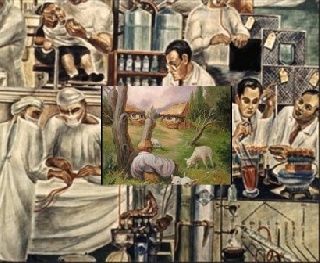Laparoscopic surgery, also known as minimally invasive surgery or keyhole surgery, is a surgical technique that involves making small incisions in the patient's body and inserting a camera and surgical instruments through them to perform the surgery. The development of laparoscopic surgery has revolutionized modern surgery, allowing for less invasive procedures, shorter recovery times, and reduced risk of complications. In this essay, we will explore the history of laparoscopic surgery, from its early beginnings to its current state of the art.
The early days of laparoscopic surgery can be traced back to the early 1900s, when the first laparoscopic procedures were performed on animals. In 1902, a German surgeon named Georg Kelling performed the first laparoscopic procedure on a dog, using a cystoscope to visualize the animal's abdominal cavity. This experiment laid the foundation for future advancements in laparoscopic surgery, which would eventually lead to the development of modern laparoscopic techniques.
The first laparoscopic surgery performed on a human patient took place in 1910, when a Swedish surgeon named Hans Christian Jacobaeus used a cystoscope to perform a diagnostic procedure on a woman with a suspected gallbladder disease. Jacobaeus made a small incision in the patient's abdomen and inserted the cystoscope through it, allowing him to view the patient's internal organs. Although the procedure was successful, it did not gain widespread acceptance at the time due to the limitations of the equipment and the lack of experience with laparoscopic techniques.
Over the next few decades, laparoscopic techniques continued to be refined and improved upon, but progress was slow due to the limited availability of equipment and the high cost of the procedures. It wasn't until the 1970s that laparoscopic surgery began to gain widespread acceptance, with the development of new instruments and techniques that made the procedures more accessible and less costly.
One of the key breakthroughs in laparoscopic surgery came in the early 1980s, with the development of video laparoscopy. This technology allowed surgeons to view the internal organs on a video monitor, greatly improving the visibility and accuracy of the procedures. The first video laparoscopic cholecystectomy (removal of the gallbladder) was performed in 1985 by French surgeon Philippe Mouret, marking a major milestone in the development of laparoscopic surgery.
The success of the video laparoscopic cholecystectomy led to a surge in interest in laparoscopic surgery, and over the next few years, new laparoscopic techniques were developed for a wide range of surgical procedures. Laparoscopic surgery was found to be particularly effective for gynecological procedures, such as hysterectomies and ovarian cyst removals, as well as for procedures involving the digestive system, such as appendectomies and colon resections.
Despite the growing popularity of laparoscopic surgery, there were still some concerns about its safety and effectiveness compared to traditional open surgery. In particular, there was a concern that laparoscopic procedures might result in an increased risk of complications, such as bleeding or organ damage. However, studies conducted in the 1990s and 2000s found that laparoscopic surgery was generally as safe and effective as open surgery, with the added benefits of reduced pain, shorter hospital stays, and faster recovery times.
In recent years, laparoscopic surgery has continued to evolve, with new technologies and techniques that have further improved its safety and effectiveness. One of the most significant developments in recent years has been the use of robotic surgery systems, which allow surgeons to perform laparoscopic procedures with even greater precision and control. Robotic surgery systems use advanced computer algorithms and robotic arms to guide surgical instruments, allowing for more precise movements and reducing the riskof human error. They also provide a 3D view of the surgical site, which allows surgeons to see the anatomy more clearly and make more accurate surgical decisions.
Another important development in laparoscopic surgery is the use of single-incision laparoscopic surgery (SILS). In SILS, the surgical instruments and camera are inserted through a single small incision, resulting in less scarring and potentially faster recovery times. SILS is particularly useful for cosmetic procedures, such as gallbladder removal and hernia repair.
In addition to these technological advances, laparoscopic surgery has also benefited from improvements in anesthesia and pain management. New techniques for administering anesthesia and pain relief have made laparoscopic procedures more comfortable for patients, and have reduced the risk of complications and side effects.
Despite these advances, there are still some challenges and limitations associated with laparoscopic surgery. One of the main challenges is the learning curve associated with the technique. Laparoscopic surgery requires specialized training and experience, and not all surgeons are comfortable with the technique. Additionally, some patients may not be good candidates for laparoscopic surgery due to underlying medical conditions or anatomical factors.
In conclusion, laparoscopic surgery has come a long way since its early beginnings in the early 1900s. From the first laparoscopic procedure on a dog to the development of modern robotic surgery systems, laparoscopic surgery has revolutionized modern surgery, making it less invasive, safer, and more effective. Although there are still challenges and limitations associated with the technique, ongoing advances in technology, training, and anesthesia are helping to make laparoscopic surgery even more accessible and effective for patients.


